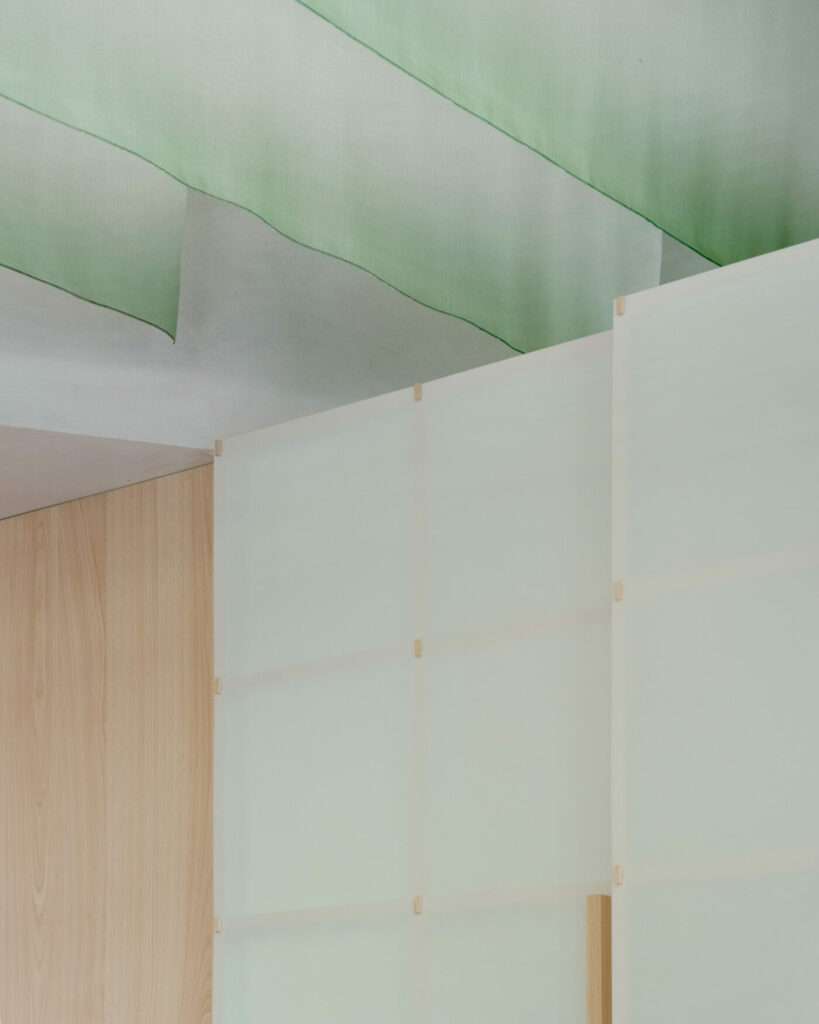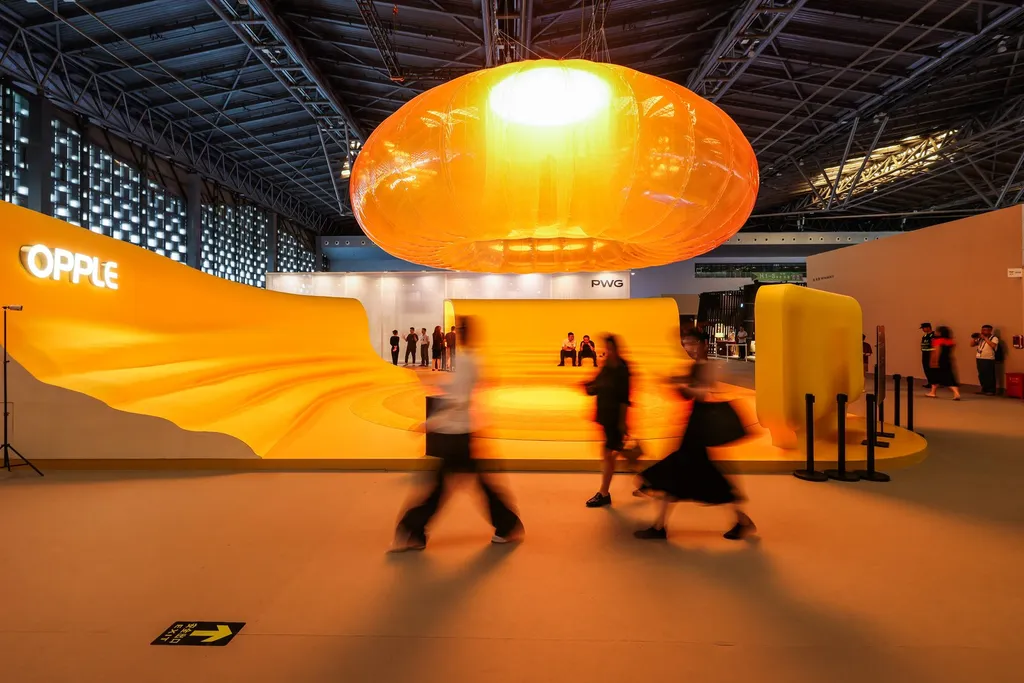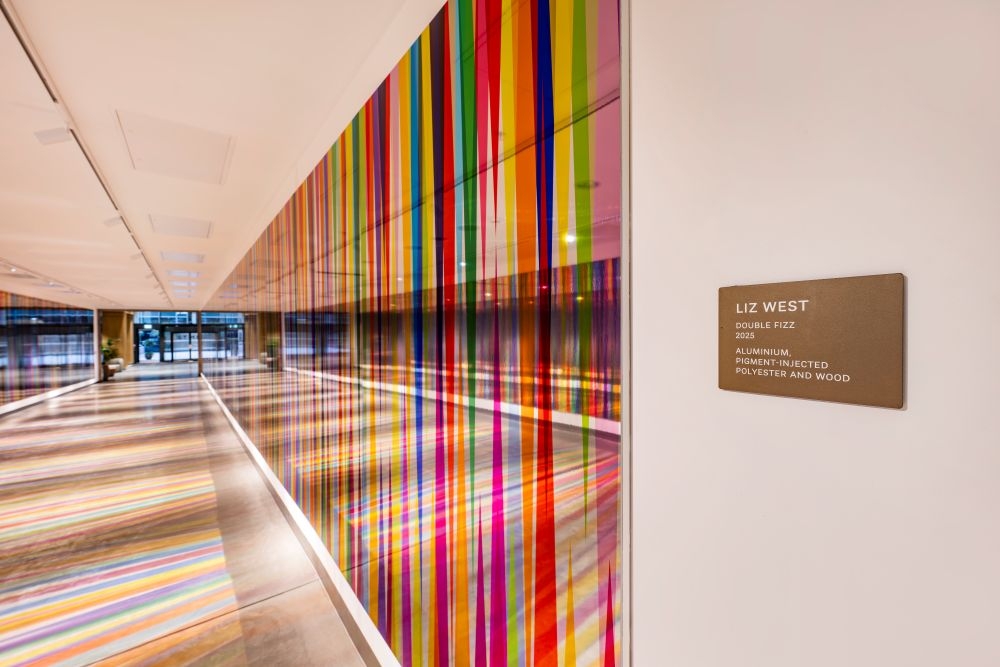Pan, a Japanese bakery in Milan, takes minimalism to another level. Here you get to enjoy freshly baked buns and taste Japanese dishes while enjoying the innovative format of the place and its design. A collaboration between the chef Yoji Tokuyoshi and Alice Yamada is a celebration of Japanese style and cuisine.
Much like the chef’s culinary approach, the architectural design subtly references Japanese culture, avoiding literal interpretations or clichéd stereotypes. The aim was to incorporate a layer of meaning that invites deeper appreciation without overwhelming the space. This was achieved by focusing on the concept of quality, both in the choice of materials and in the precision of the details.


The Interior of the cafe combines natural earthy tones with minimalistic hues, with a pop of emerald green as the color of the counters, made of fiberglass grid panels emphasizing the modern aspect of the design. The ceiling drapes in the same color echo the counter and create a dialogue in the space. Large windows, showcasing the interior to the outside world, also invite in more light creating a fresh atmosphere in the bakery.
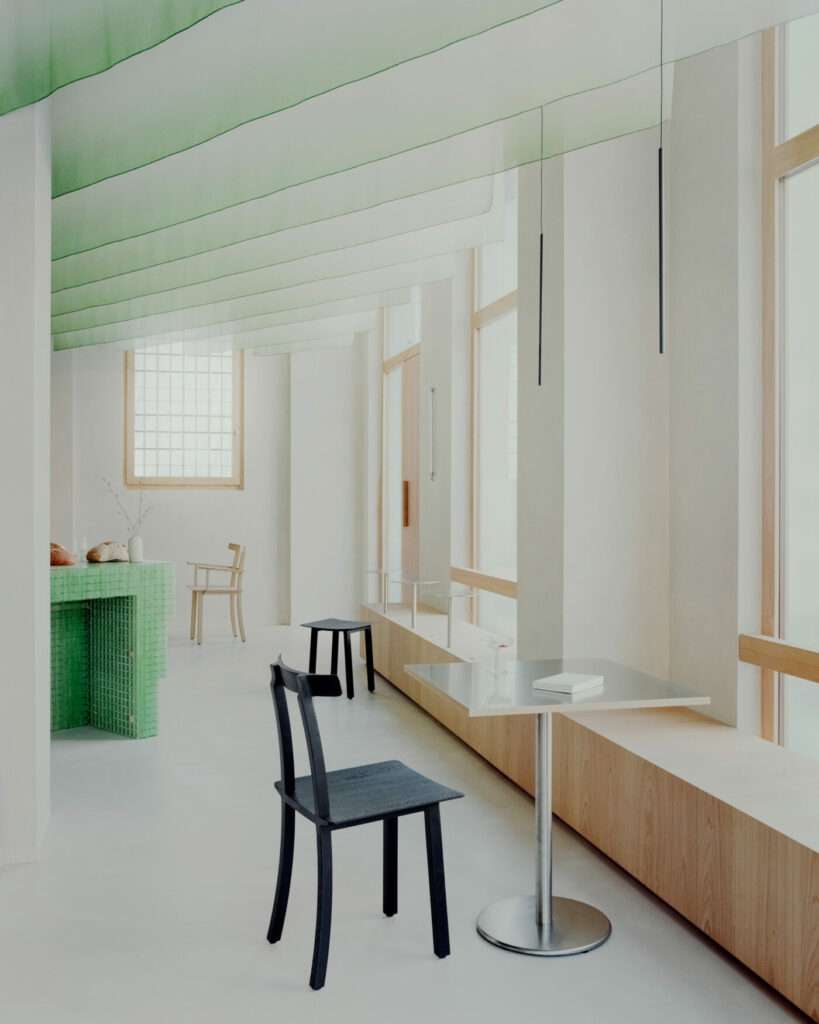
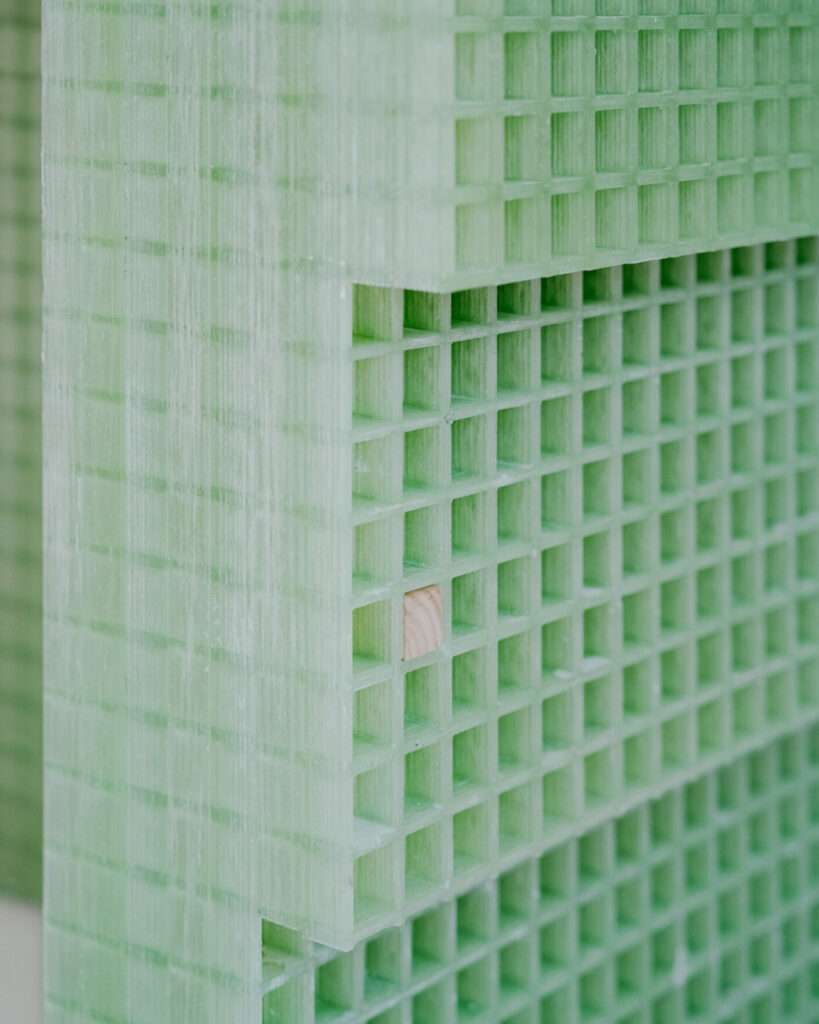
Besides the colorful parts of the interior, the cafe is more neutral with the white cladding lighting up the room and allowing the emerald green pieces of the interior to be the loudest points of the design. The venue’s two rooms are connected and intertwined with a long wooden bench along the walls, an additional material that matches the Japanese aesthetic of the bakery.
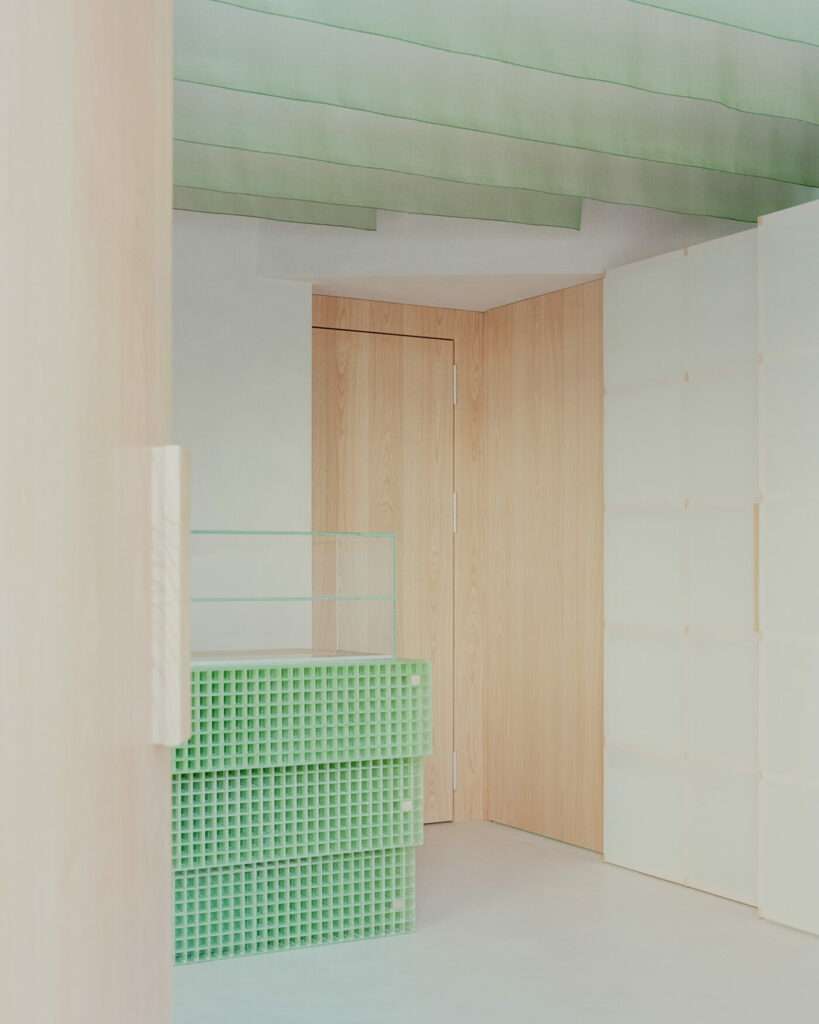
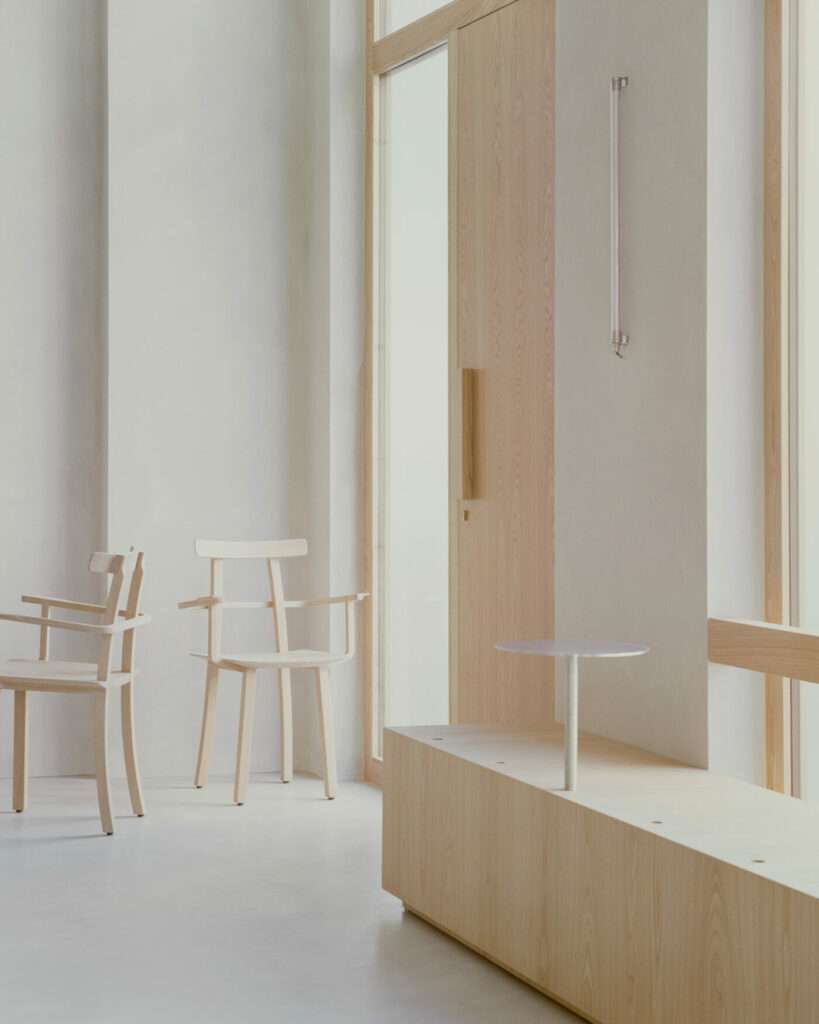
The bar area stands apart from the main space, distinguished by a contrasting selection of colors and materials. The counter features black-stained chestnut wood with stainless steel accents, while a cleft natural stone boulder reintroduces balance to the material palette, evoking an almost spiritual atmosphere that celebrates the beauty of imperfection.
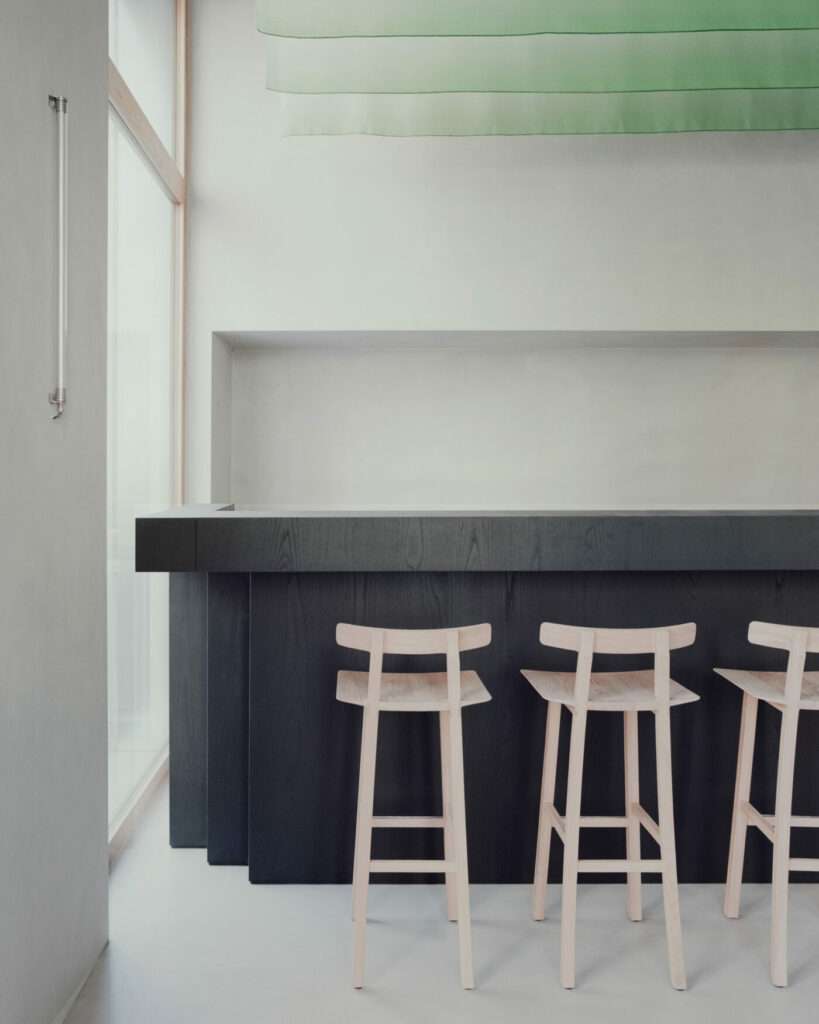

The implementation of the ante bathroom, a small space between a bathroom and another room, as a backdrop to the room was achieved
featuring a wooden frame with translucent pressed cellulose panels. This design introduces a green monochromatic box, from which the sink’s monolithic Moltrasio stone element emerges.

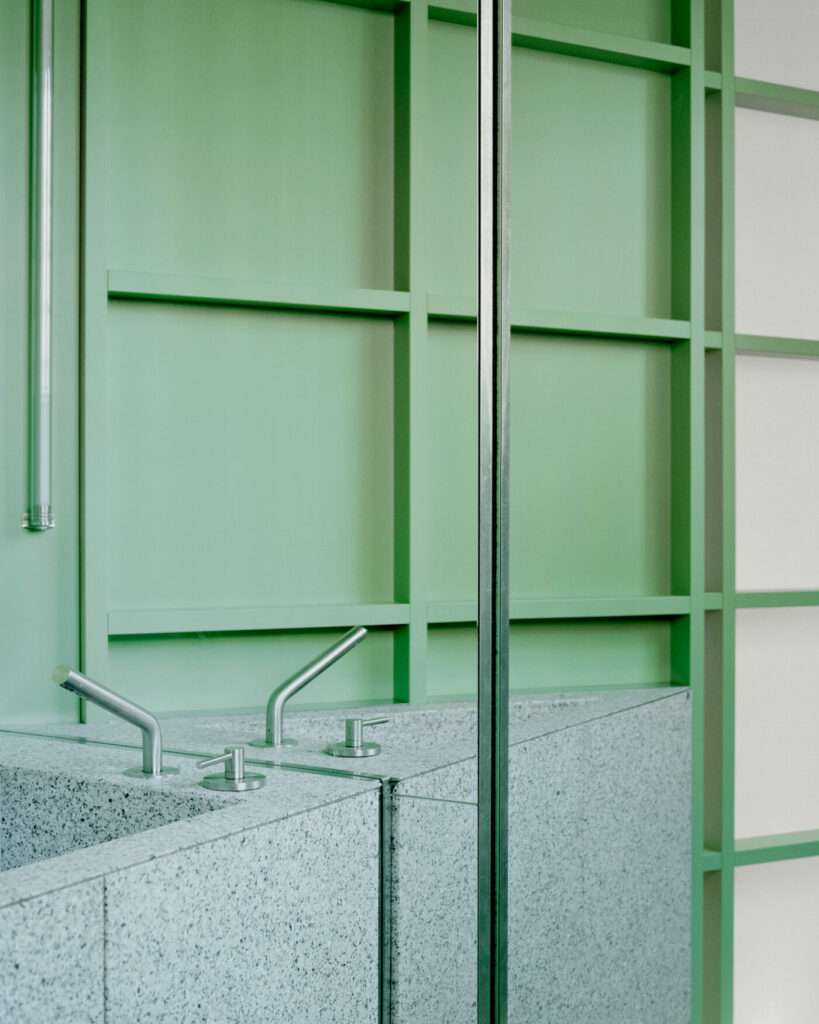
The design reflects a restrained elegance, where the influence of Japanese aesthetics emerges in the pursuit of harmony, simplicity, and craftsmanship, creating a refined atmosphere that is rich in subtlety and depth.
